Synthesis and characterization of a long-acting emtricitabine prodrug nanoformulation
- PMID: 31496683
- PMCID: PMC6689761
- DOI: 10.2147/IJN.S215447
Synthesis and characterization of a long-acting emtricitabine prodrug nanoformulation
Abstract
Purpose: A palmitoylated prodrug of emtricitabine (FTC) was synthesized to extend the drug's half-life, antiretroviral activities and biodistribution.
Methods: A modified FTC prodrug (MFTC) was synthesized by palmitoyl chloride esterification. MFTC's chemical structure was evaluated by nuclear magnetic resonance. The created hydrophobic prodrug nanocrystals were encased into a poloxamer surfactant and the pharmacokinetics (PK), biodistribution and antiretroviral activities of the nanoformulation (NMFTC) were assessed. The conversion of MFTC to FTC triphosphates was evaluated.
Results: MFTC coated with poloxamer formed stable nanocrystals (NMFTC). NMFTC demonstrated an average particle size, polydispersity index and zeta potential of 350 nm, 0.24 and -20 mV, respectively. Drug encapsulation efficiency was 90%. NMFTC was readily taken up by human monocyte-derived macrophages yielding readily detected intracellular FTC triphosphates and an extended PK profile.
Conclusion: NMFTC shows improved antiretroviral activities over native FTC. This is coordinate with its extended apparent half-life. The work represents an incremental advance in the development of a long-acting FTC formulation.
Keywords: monocyte-derived macrophage; human immunodeficiency virus type 1; long-acting antiretrovirals; palmitoyl chloride; viral reservoirs.
Conflict of interest statement
The authors report no conflicts of interest in this work.
Figures
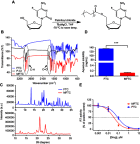

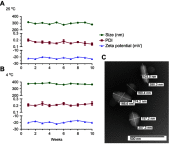
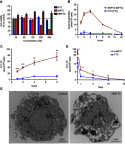
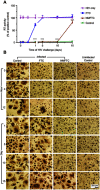
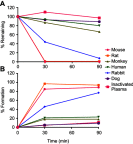
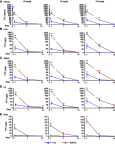
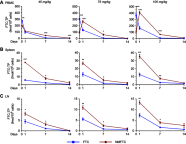
Similar articles
-
Synthesis of a long acting nanoformulated emtricitabine ProTide.Biomaterials. 2019 Nov;222:119441. doi: 10.1016/j.biomaterials.2019.119441. Epub 2019 Aug 20. Biomaterials. 2019. PMID: 31472458 Free PMC article.
-
Development and characterization of a long-acting nanoformulated abacavir prodrug.Nanomedicine (Lond). 2016 Aug;11(15):1913-27. doi: 10.2217/nnm-2016-0164. Epub 2016 Jul 26. Nanomedicine (Lond). 2016. PMID: 27456759 Free PMC article.
-
An Enhanced Emtricitabine-Loaded Long-Acting Nanoformulation for Prevention or Treatment of HIV Infection.Antimicrob Agents Chemother. 2016 Dec 27;61(1):e01475-16. doi: 10.1128/AAC.01475-16. Print 2017 Jan. Antimicrob Agents Chemother. 2016. PMID: 27821449 Free PMC article.
-
Emtricitabine, a new antiretroviral agent with activity against HIV and hepatitis B virus.Clin Infect Dis. 2006 Jan 1;42(1):126-31. doi: 10.1086/498348. Epub 2005 Nov 23. Clin Infect Dis. 2006. PMID: 16323102 Review.
-
Colchicine prodrugs and codrugs: Chemistry and bioactivities.Eur J Med Chem. 2018 Jan 20;144:229-242. doi: 10.1016/j.ejmech.2017.12.029. Epub 2017 Dec 8. Eur J Med Chem. 2018. PMID: 29274490 Review.
Cited by
-
Solubility Data, Solubility Parameters and Thermodynamic Behavior of an Antiviral Drug Emtricitabine in Different Pure Solvents: Molecular Understanding of Solubility and Dissolution.Molecules. 2021 Jan 31;26(3):746. doi: 10.3390/molecules26030746. Molecules. 2021. PMID: 33572688 Free PMC article.
-
Polymer-prodrug conjugates as candidates for degradable, long-acting implants, releasing the water-soluble nucleoside reverse-transcriptase inhibitor emtricitabine.J Mater Chem B. 2023 Dec 13;11(48):11532-11543. doi: 10.1039/d3tb02268d. J Mater Chem B. 2023. PMID: 37955203 Free PMC article.
-
Chronic Hepatitis B Infection: New Approaches towards Cure.Biomolecules. 2023 Aug 1;13(8):1208. doi: 10.3390/biom13081208. Biomolecules. 2023. PMID: 37627273 Free PMC article. Review.
-
Recent Advances in Antiviral Drug Delivery Strategies.AAPS PharmSciTech. 2025 Mar 4;26(3):73. doi: 10.1208/s12249-025-03053-3. AAPS PharmSciTech. 2025. PMID: 40038154 Review.
-
Prodrug Therapies for Infectious and Neurodegenerative Diseases.Pharmaceutics. 2022 Feb 26;14(3):518. doi: 10.3390/pharmaceutics14030518. Pharmaceutics. 2022. PMID: 35335894 Free PMC article. Review.
References
-
- Bangsberg DR, Perry S, Charlebois ED, et al. Non-adherence to highly active antiretroviral therapy predicts progression to AIDS. AIDS. 2001;15(9):1181–1183. - PubMed
MeSH terms
Substances
Grants and funding
- R01 NS036126/NS/NINDS NIH HHS/United States
- R01 MH115860/MH/NIMH NIH HHS/United States
- R01 AI145542/AI/NIAID NIH HHS/United States
- P01 DA028555/DA/NIDA NIH HHS/United States
- P30 MH062261/MH/NIMH NIH HHS/United States
- P01 NS031492/NS/NINDS NIH HHS/United States
- R56 AI138613/AI/NIAID NIH HHS/United States
- P01 MH064570/MH/NIMH NIH HHS/United States
- R01 MH104147/MH/NIMH NIH HHS/United States
- R01 AG043540/AG/NIA NIH HHS/United States
- P30 AI078498/AI/NIAID NIH HHS/United States
- R01 NS034239/NS/NINDS NIH HHS/United States
LinkOut - more resources
Full Text Sources
Other Literature Sources

